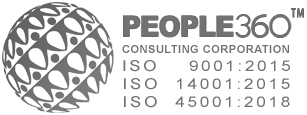by R.M. Tubelonia
I first came across the term in my brief sojourn in the USA early last year. Still don’t know who or what organization coined the word but from my readings, it seems to have become a buzzword in 2008. Steve Jobs, John Medina, Nancy Duarte, and Garr Reynolds, to name only a few, were the personalities associated with this word. How? The late Steve Jobs started it all with his powerful and mostly riveting presentations every time he introduced new Apple products. Nancy Duarte headed the firm which worked with Apple in developing their presentations. John medina was a brain microbiologist who wrote the book “Brain Rules” which is most often quoted for the scientific basis for techniques in avoiding this type of death. Garr Reynolds, an internationally-known graphic designer, was one of those who quoted Medina in his block buster of a book, “Presentation Zen”.
Why should safety officers and OSH trainers take notice of this condition which refers to the catatonic state that poorly-designed and delivered presentation subject its audience? The yawns, the blank stares, eyes which want to close, the too-often trips to the comfort rooms are just symptoms of this condition. If one is so careless or even unfortunate, you might even hear snores from your audience! We ought to remember that our presentations has the power to influence our audience change their skills, attitudes and knowledge so that OSH concepts and practices are remembered and eventually practiced. So what do the experts tell us how to avoid this?
It’s really simple. At the center of it all is the knowledge that Powerpoint and its Macbook counterpart, Keynote, complement the star of the presentation, which is YOU, the speaker! Which means no powerpoint cum hand-out. The PPT is to highlight only the important points of your presentation. Let your hand-outs provide the details. Do not let your audience ‘skip’ your presentation just because they thought that anyway, your printed PPT, is a good enough substitute.
Which also means not too many text; use visuals rather than text if you can; and if visuals are used, avoid pixelization by using high-quality graphics; use the simple and elegant fonts in the sans serif family (Arial, Calibri, Helvetica, etc.), create your own template if you can; use colors wisely; use animation sparingly (the days of the ‘flying’ letters from who knows where, are no more); combine audio and video. Sans the slideware and the format, try to inject some flair in your presentation so that your audience continues to be engaged with your message. Remember that audiences want to see presentations that are Short, Simple, Legible and Engaging, as opposed to Long, Boring, Bad slides and Content-free slides ( a direct quote from Guy Kawasaki, one of Reynolds’ colleagues)! And if you do use pictures that you have downloaded from the internet- for courtesy’s sake, do attribute the source.
Just a reminder- as today’s OSH trainers, we most often automatically assume that slideware technologies as Powerpoint and Keynote are THE instructional tools. But sometimes, so called low-tech tools like plain manila paper, kraft paper, or the whiteboard at your back, could be better !
Rosanna “Anna” M. Tubelonia counts on more than three decades of experience in the design and delivery of various OSH trainings, for both local and foreign participants, including those with Japan International Cooperation Agency (JICA) and the International Labor Organization (ILO). She was the former Head of the Training & Public Information Division (TPID) of the OSHC of the Department of Labor & Employment and currently the Director for Training & Education of People360 Consulting Corporation.


